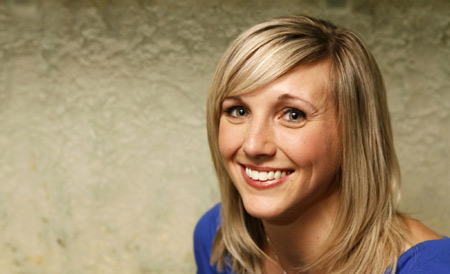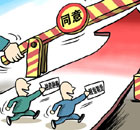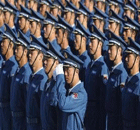Stars
US team learn from Curl Girls' failings
(Agencies)
Updated: 2010-01-13 10:24
 |
Large Medium Small |
NEW YORK - The failures of the United States' "Curl Girls" at the Turin Games gave this year's team a lesson in what not to do in preparing for Vancouver, says Olympian Nicole Joraanstad.
|
 U.S. Olympic curler Nicole Joraanstad poses for a portrait in New York November 30, 2009. The heavily-hyped 2006 U.S. women's curling team, dubbed the Curl Girls, flopped to eighth place due to overconfidence and lack of preparation, Joraanstad told Reuters in an interview and she vowed the twin sins would not be repeated next month. Picture taken November 30, 2009. [Agencies] |
The heavily-hyped 2006 U.S. women's curling team, dubbed the Curl Girls, flopped to eighth place due to overconfidence and lack of preparation, Joraanstad told Reuters in an interview and she vowed the twin sins would not be repeated next month.
"The Curl Girls? In my personal opinion, they didn't prepare like they should have prepared," the 29-year-old Joraanstad said during a visit to Manhattan.
Joraanstad said she and her team mates had worked overtime to get ready for what promises to be one of the most boisterous events at the Feb. 12-28 Vancouver Games. Tickets are already at a premium for the sport beloved by Canadians.
"With curling, you've got to get on the ice, play a lot of games, play against a lot of different competition," she said, noting that the 2006 U.S. Olympians played only five events leading up to the Winter Games.
"You've got to travel and unfortunately they did well in the worlds the year before, got the silver in 2005, and thought it would not be different. But it is completely different.
"I think that was how we modelled our performance plan for the last eight months: make sure we get a lot of ice time."
Joraanstad said her team had been busy on the curling circuit, making two or three trips to Canada each month to keep sharp and putting in a whole summer of practice.
She said the prospects of competing in Olympic curling in British Columbia was a bonus, providing an atmosphere that would help to lift her team.
"It will be sold out and it's going to be loud and that's how we play best, so we're pretty excited about that. The louder the better for me," Joraanstad said.
DOMINANT TEAM
A search for the right curling atmosphere has already helped to shape her life with a move from her native Seattle to Wisconsin so she could develop her skills.
"In Seattle, if I said 'I curl' people would go: 'I don't know what you are talking about', or they'd think I'm curling my hair or curling a dumb bell, which wouldn't make much sense because I'm not the biggest person ever."
Joraanstad, who caught the curling bug at the age of 15 from her father, who competed in the 1987 world championships in Vancouver, settled on the University of Wisconsin for her academic and sports education.
"In Madison they know what it is, and there's a lot of support in that area for curling," she said. "There's a large club in Madison I play out of. And within a 30-mile radius there's probably another 10 clubs. People know what it is."
Joraanstad's judgment was impeccable. "Now I'm on a team the last five years and we've kind of dominated, won the last four national championships."
Curling, a popular recreational sport in Canada and in pockets of the United States, is a cross between shuffleboard and bowls played on ice called curling sheets with a heavy granite stone that is delivered with a push then coaxed along by sweepers into a scoring zone.
Each competitor on the four-person team gets to throw two stones from each end of the curling sheet. "I throw the third and fourth stones, so they call me the second," she explained.
"When I'm not throwing I get to sweep, which I like because I feel like I can be part of the game and help drag rocks further or keep them a little bit straighter."
Joraanstad has shown determination in that regard, too, as smoothing ice to affect a sliding 40-pound (18-kg) stone is strenuous work.
"I've been training really hard the last eight months to get stronger so I can sweep. We've tested that I can sweep a rock and make it go about 12 feet (3.7 m) further than what someone would release it at, which is a lot."
THREE COWBELLS
Joraanstad, who juggles her curling with a full-time job as corporate recruiter for a telecommunications company, relishes the raucous reception she expects in Vancouver's curling arena.
"They make noise verbally, but also cowbells are popular," she said. "My dad brings three. Or air horns or things that make different noises, and chanting. They're a rowdy bunch; they love it."
Joraanstad said Canada were among the favourites along with 2006 Olympic champions Sweden and the Swiss.
"And China has evolved. They won the worlds last year for the first time. They've been training in Canada and been playing year-round so they're a force to be reckoned with. Everyone thinks it's going to be a dogfight."
The American remains optimistic about her own team's chances.
"We want to be on the top of the podium and hearing our national anthem playing and having a gold medal around our necks," she said.
An Olympic triumph might lead to one more task.
Joraanstad, who has several curling-related tattoos commemorating championship victories, may have to decide on a place of honour to represent the moment.







